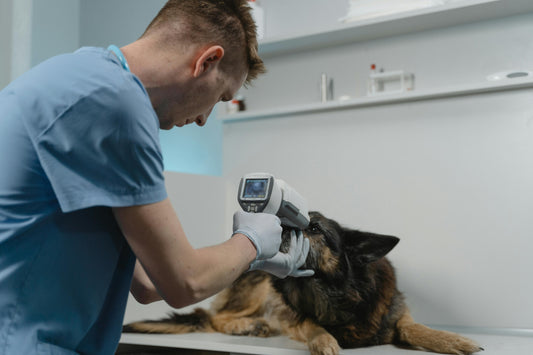Dental disease is one of the most common health issues in cats, and it can creep up without much warning. Even attentive pet owners can miss the early signs. Over time, problems like gum inflammation, tooth decay and mouth pain can seriously affect your cat’s comfort and health,not to mention cost you significantly in vet bills.
This guide breaks down the types of cat dental issues, how to recognise early symptoms, and what treatment and prevention options are available.
What Is Feline Dental Disease?
Feline dental disease covers various conditions affecting the teeth and gums. The most common problems include:
- Tooth decay or cavities
- Gum disease, like gingivitis and periodontitis
- Tooth resorption, where the tooth structure breaks down internally
- Stomatitis, which causes painful inflammation in the mouth
Left untreated, these issues can cause pain, difficulty eating, and lead to infection. Cat mouth disease can affect cats of all ages and breeds, though older cats tend to be more susceptible.
Recognising Early Symptoms of Dental Problems
Cats tend to hide discomfort, so oral issues often go unnoticed until they become more serious. Look out for these signs:
- Bad breath
- Drooling
- Struggling to chew or dropping food
- Pawing at the mouth
- Bleeding gums
- Swollen or red gums
- Yellow or brown tartar buildup
Behavioural changes like irritability or a drop in appetite can also signal that something's not right. Many of these symptoms point to gum disease in cats or other common teeth problems in cats.
What Causes Dental Issues in Cats?
Most dental problems begin with plaque and tartar buildup. Other contributing factors include:
- Lack of routine dental care
- Genetics
- Diet (wet food tends to stick more than dry)
- Ageing
- Underlying conditions like autoimmune diseases
Some cats are just more prone to cat dental issues, no matter how good their diet or hygiene routine is.

Types of Dental Disease in Cats
Understanding the different types of dental disease can help you know what to expect and what to ask your vet about. These teeth problems in cats range from mild to severe, with varying symptoms and treatment options.
Periodontal Disease
This starts with gingivitis and can progress to periodontitis. As bacteria build up along the gumline, the gums become inflamed and may start to recede. Over time, infection can damage the tissue and bone supporting the teeth, leading to tooth loss. If you're wondering, is gingivitis contagious in cats? The answer is no, but it does spread within the mouth if untreated.
Tooth Resorption
Tooth resorption occurs when a cat’s body begins to break down a tooth. It can affect the crown, root or both, and is classified based on how the root appears on an X-ray:
- Type 1: The crown is damaged, but the root still looks normal with a clear outline.
- Type 2: The root appears to be dissolving into the surrounding bone.
- Type 3: A mix of Type 1 and Type 2 changes in the same tooth.
This condition is often painful and usually requires tooth removal. Learn more in our full article on cat tooth resorption.
Stomatitis
Feline stomatitis involves widespread inflammation of the mouth and upper throat. It’s thought to be an overreaction of the immune system to plaque on the teeth. Cats with this condition may show signs of extreme discomfort, drooling or vocalising when they try to eat. Full-mouth extractions are often the most effective treatment. We cover this more in our dedicated guide to stomatitis in cats.
Oral Tumours
Cats can develop both benign and malignant tumours in the mouth. Squamous cell carcinoma is the most common and can spread quickly. Signs include swelling, drooling, difficulty eating and bad breath. A biopsy is needed to confirm the diagnosis.
Glossitis
This is inflammation of the tongue, caused by injury, infection, disease or foreign objects. It can make eating painful. A vet may prescribe antibiotics or provide supportive care to help the tongue heal.
Xerostomia (Dry Mouth)
Dry mouth happens when a cat doesn’t produce enough saliva. It can be linked to kidney disease, medication, or dehydration. Signs include trouble eating, dry gums, and a heavy coating on the teeth. Treatment focuses on managing the cause and keeping the mouth moist.
How Vets Diagnose Dental Disease
A vet will usually start with a physical examination, checking for obvious signs like redness, swelling or loose teeth. Because cats can be squirmy or nervous, many full dental assessments are done under anaesthesia.
Dental X-rays are often essential to see below the gumline and identify problems like resorption or hidden decay.
Treatment Options Based on Condition Severity
Depending on the diagnosis, your vet might recommend:
- A scale and polish under anaesthetic
- Tooth removal for badly damaged or resorbed teeth
- Antibiotics for infections
- Pain relief for inflammation or after surgery
- At-home dental care to manage future issues
For severe stomatitis or advanced resorption, full-mouth extractions may be the most humane option. It might sound extreme, but cats usually recover well and eat just fine afterwards.
Other Medical Causes of Mouth Pain in Cats
Not all mouth pain is caused by dental disease. Other causes include:
- Viral infections (herpesvirus, calicivirus)
- Ulcers caused by kidney disease or immune issues
- Oral tumours (benign or malignant)
- Dry mouth (xerostomia), often linked to dehydration or medication
- Developmental disorders like improper bite and enamel defects
- Face trauma
These conditions often need more targeted treatment and are best assessed by a vet.
Preventing Dental Disease at Home
Good dental care doesn’t have to be complicated. Here’s what helps:
- Brush your cat’s teeth regularly with pet-safe products
- Try dental treats or additives
- Feed a diet that supports oral hygiene
- Schedule annual vet checkups, including dental assessments
If brushing feels impossible, start slowly. Even a few times a week is better than nothing. Our full guide on brushing cats teeth has practical tips to get started.
Staying on Top of Your Cat’s Oral Health
Dental issues might fly under the radar, but they can have a big impact. From everyday concerns like plaque buildup to more serious problems like cat tooth decay or stomatitis, knowing what to watch for and how to act early can make all the difference.
Want more help? We’ve put together expert guides on topics like: is gingivitis contagious in cats, and cat gum disease. When in doubt, your vet is the best person to help your cat feel more comfortable and stay healthy.




